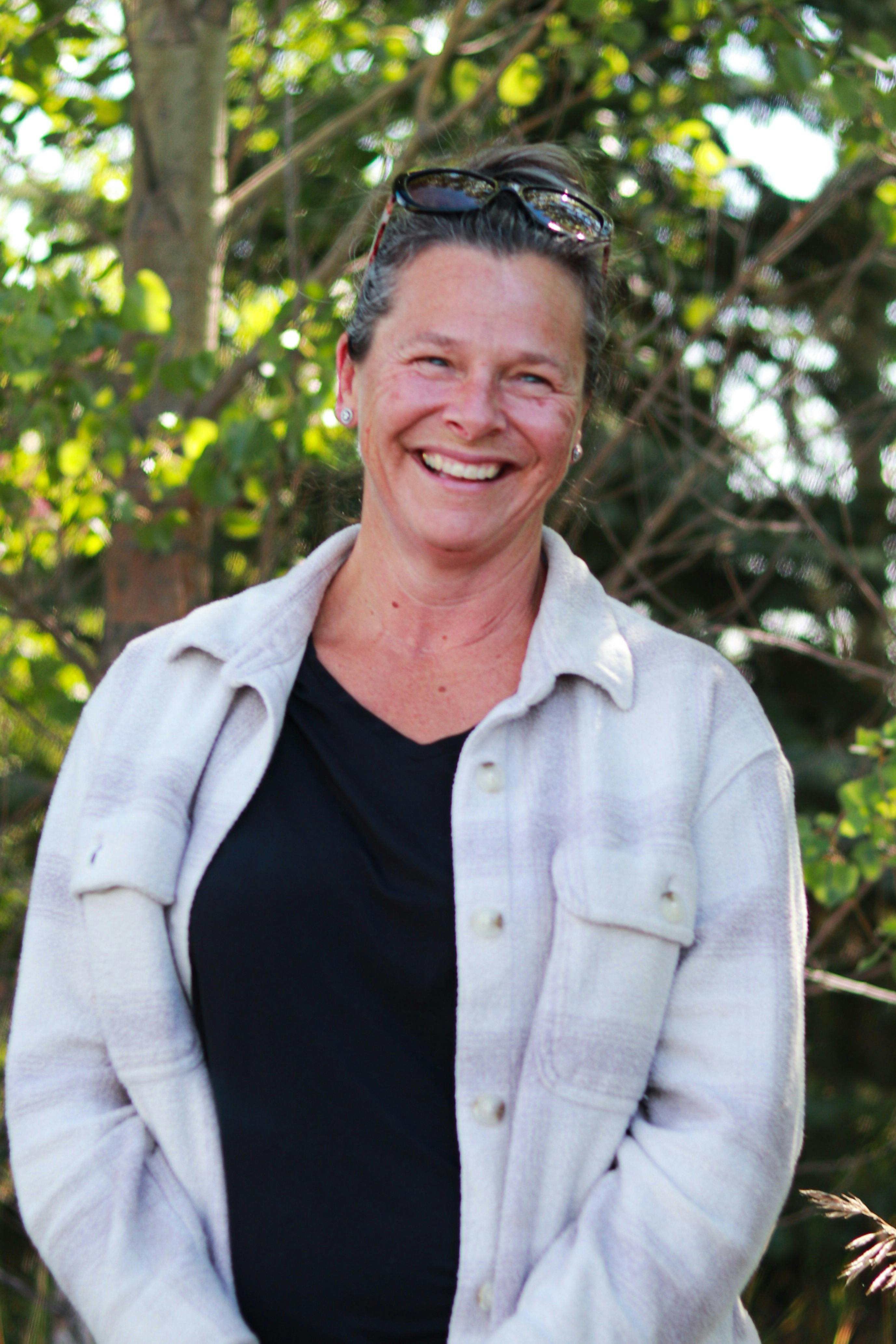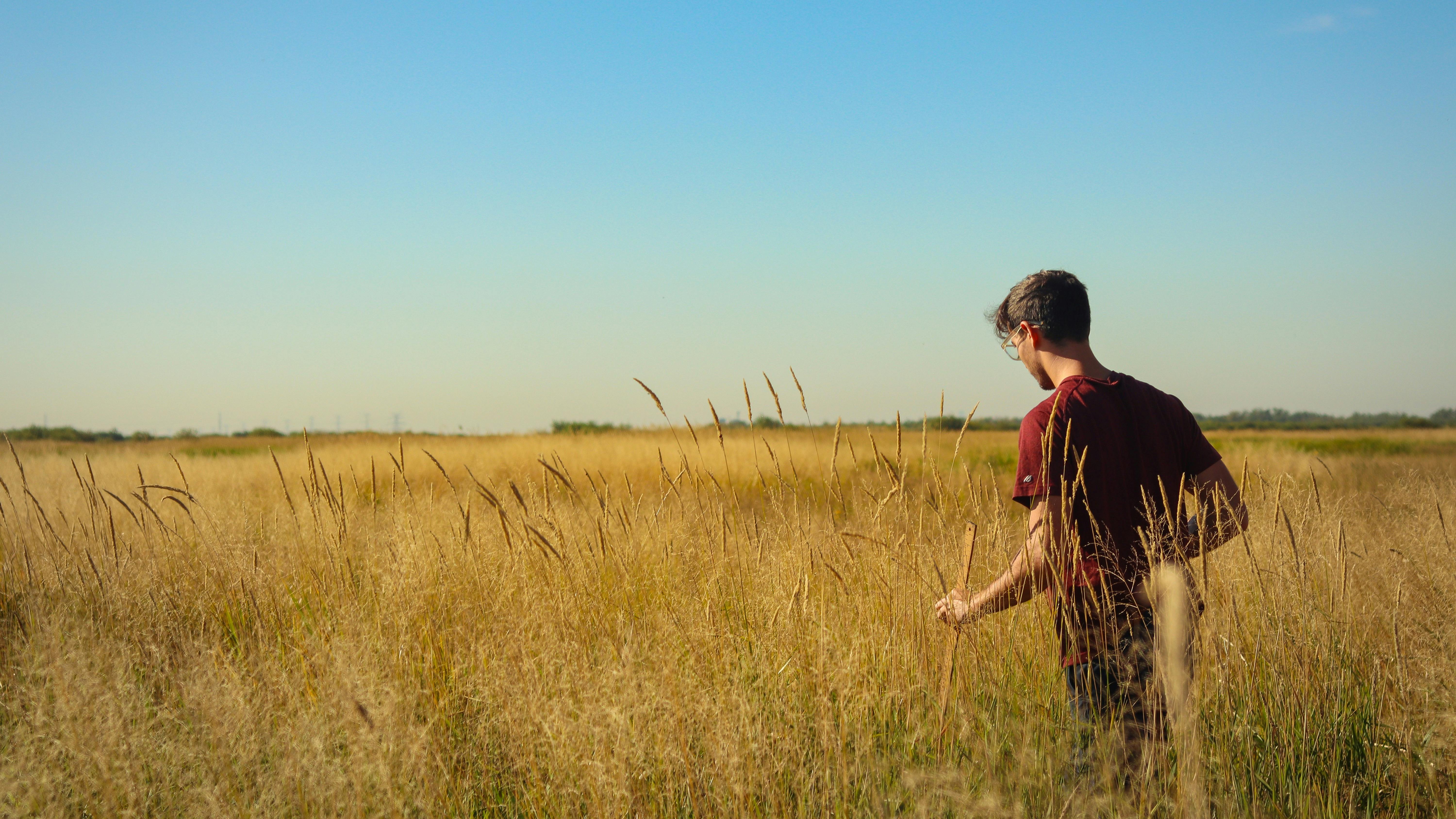About the Society
The Agroforestry & Woodlot Extension Society—more regularly called AWES—is an Edmonton-based environmental non-profit organization. Our home base, located at the northern end of Fort Road on the outskirts of Edmonton, is nestled within a government research facility whose extensive grounds are protected by mature tree stands and shelterbelts comprising a variety of species of trees and shrubs.
This spring, AWES will celebrate its 15th anniversary of actively working within and promoting agroforestry and woodlot management on private and public lands across Alberta. AWES strives to increase education and awareness of the social, environmental, and economic value and benefits generated by agroforestry and woodlot practices within the agricultural landscape. We promote responsible woodlot and agroforestry management by providing technical expertise, project management and planting support, as well as extension services to a variety of parties. These include landholders, stewardship groups, other non-governmental organizations, municipalities, corporations, and others who influence land-use practices in Alberta.
Since its inception, AWES has been fortunate to undertake many unique projects across Alberta and, more recently we have expanded into the Prairie Provinces. Our diverse project portfolio includes two primary programs. The first is our grant-funded programs (such as the federal 2 Billion Trees [2BT] Program, a cost-share planting program available to landholders). The second is our extension services, whereby we actively create workshop events to educate the public or attend conferences and tradeshows to promote our organization’s services. We also gain projects and services through individuals or groups who reach out to AWES to host workshops, planting demonstrations, and other events.
The AWES Process
Navigating the AWES planting process is relatively simple, and we strive to ensure projects are implemented as painlessly and efficiently as possible. We have condensed the planting project process into three actionable steps: Motivation & Needs, Measurable Goals, and Actionable Plan. This article outlines the key considerations and strategies underpinning this process.

Motivations for Tree Planting
Once the initial spark of interest or passion for a planting project has ignited within the landholder and they’ve contacted AWES, the first steps in the project-development process are listening to their (1) concerns, (2) desired outcomes for the planting project, and (3) vision. This step is known as their Motivation & Needs.

Common Motivations & Needs:
- Shelter for People
- Shelter for Crops
- Habitat Creation/Attracting Wildlife
- Restoration
- Runoff Control
- Landscape Hydration
- Legacy Creation
- Animal Welfare
- Forest Resources
- Recreational Space
Defining Planting Goals
When working with the public, AWES recognizes that there is no one-size-fits-all approach. Each person has different levels of experience, education, planting expertise, or technical know-how. We must remember that some landholders will have clearly defined goals, while others will need help shaping theirs. Not everyone has the words or experiences needed to start with a fully formed vision for their planting project, but everyone has their own motivations.
Once the landholder’s Motivations & Needs are defined, AWES compares them with the property’s environmental sensitivities and its current observed ecological characteristics, which are all used to inform and set the project’s goals and metrics. Measurable Goals ensure that all parties involved with the project are on the same page and key performance indicators are in place to quantify project success. All these factors are translated into a planting plan that clearly illustrates how the goals are met. These goals may also inform us of our methods and approach for site preparation.
Planting Plan
After working with the landholder to define their Measurable Goals, AWES transforms them into an illustrated proposed planting plan. AWES’s next step is ensuring that the landholder feels that the proposed planting plan adequately reflects their goals and vision. We ensure that we clearly communicate (verbally and by email) with the landholder, explaining how the proposed plant species, placement, quantity, and density will help the landholder achieve their goals. Once all the project details have been reviewed, a tentative working budget is presented that describes the different cost-share grant programs that AWES has available. At the conclusion of these discussions and review, an Actionable Plan is ready to be put in place to implement the planting plan.
Preliminary Tool: Landholder Archetypes
Open discussions with landholders about their motivations provide AWES with the opportunity to see things from their perspective. The landholders we work with often fall within the following eight archetypes:

The Municipality
These groups typically hold land to provide value to the public. They may plant trees that benefit people and improve the health of the landscapes. They may also be interested in the shelter and conservation benefits of these plantings.
The Windblown
These landholders are often new property owners with no shelter at all. Their main motivation is quick shelter or ensuring succession for their aging shelterbelt. Some may have lost shelter due to development or fire. The prairie provinces are very windy, so shelter is quite important.
The Large-Scale Landowner
Some people hold large amounts of land and want to restore tree cover, replant forests, or create tree cover on marginal lands, among other motives. Efficiency comes into play at the large scale.
Eco-Legacy Leaders
Groups or individuals that purchase and restore lands for conversation, easements, or trusts, for legacy impacts.
The Livestock Caretaker
This archetype is interested in how trees can contribute to the helath of their land and livestock. They are partially interested in the returns on investment such, considering a metric like feed effieciency, but are mostly motivated by improving animal welfare and water quality.
Agricultural Landscape Stewards
Groups or individuals that are looking to increase crop yields and moisture or soil retention, by supporting landscape health.
The Wildlife Lover
These landholders are characterized by their drive to create and steward habitat for native species. They value biodiversity and believe that nature has intrinsic value.
Note: Some landholders fulfill multiple archetypes at once or will have motivations that are not fully captured by any one of the archetypes described. These categories of archetypes are a preliminary tool used as a starting point to gain an in-depth understanding of your landholder’s motivations as you build your relationship with them.

Sonja Shank, Landowner in Sturgeon County, Alberta
Case Study: Shank Wetland Restoration & Biodiversity
For the past 20 years, the Shanks have been actively stewarding their land. As an environmentally conscious agricultural specialist, Sonja already had several clear goals defined for her project. She approached AWES with concerns about her degraded wetland and the repeated flooding of the surrounding marginal land. She therefore wanted to restore the wetland, while concurrently creating habitat for wildlife. Additionally, Sonja wanted to improve the overall health of the landscape and the quality of her horse pasture. AWES performed a site assessment, after which we decided that a high-density native planting, with significant variation in arrangements, would maximize planting success, as well as increase habitat diversity. Furthermore, we proposed restoring woody cover, as it helps moderate flooding and wetland dry cycles. Sonja was pleased with the proposed plan, which was based on her goals, and she subsequently implemented the project in the spring of 2024. Sonja’s wetland restoration project was designed and implemented by AWES, and project funding was provided by Alternative Land Use Services (ALUS). Sonja also accessed AWES’s 2BT funding to continue enhancing her shelterbelt, which is located in another portion of her pasture.

Goal: Restore flooded marginal land to its natural state.
Plan: Plant native species based on adjacent, undistributed landscape.
Result: A prescription with high biodiversity and a focus on heterogeneity in the landscape.
Balancing Resources & Goals
One final consideration: although it may seem like incorporating or implementing every single goal is necessary to achieve ideal results, reality needs to be part of the conversation. In other words, landholders will have varying abilities and access to resources, which will determine, to an extent, the scope and scale of their proposed project. Consider how the following factors may affect the goals set and the planting plan to be created:
- Financial Resources
- Equipment Available
- Time
- Skill/Experience
- Physical Limitations of Landholder
Words of Encouragement
While this is a simplified version of navigating the process for planting projects, we understand that delving into any new project can be daunting. AWES has projects extending across the Prairie Provinces that involve all types of landholders and meet diverse sets of needs. Although the vast majority of our projects are successful, we have also made mistakes, which we have used as learning opportunities. By implementing the considerations and strategies we have illustrated above, in addition to seeking to understand your landholders’ perspectives and goals, you will maximize the likelihood of a successful collaboration. Thank you for reading, and happy planting!
The Reforest Canada Collective believes that knowledge-sharing and collaboration are essential to advancing sustainable and resilient forests. We actively engage stakeholders across the forestry community to highlight best practices, foster collaboration, and provide valuable insights from organizations and professionals. We hope articles like these will inspire and support others working towards sustainable land stewardship.


